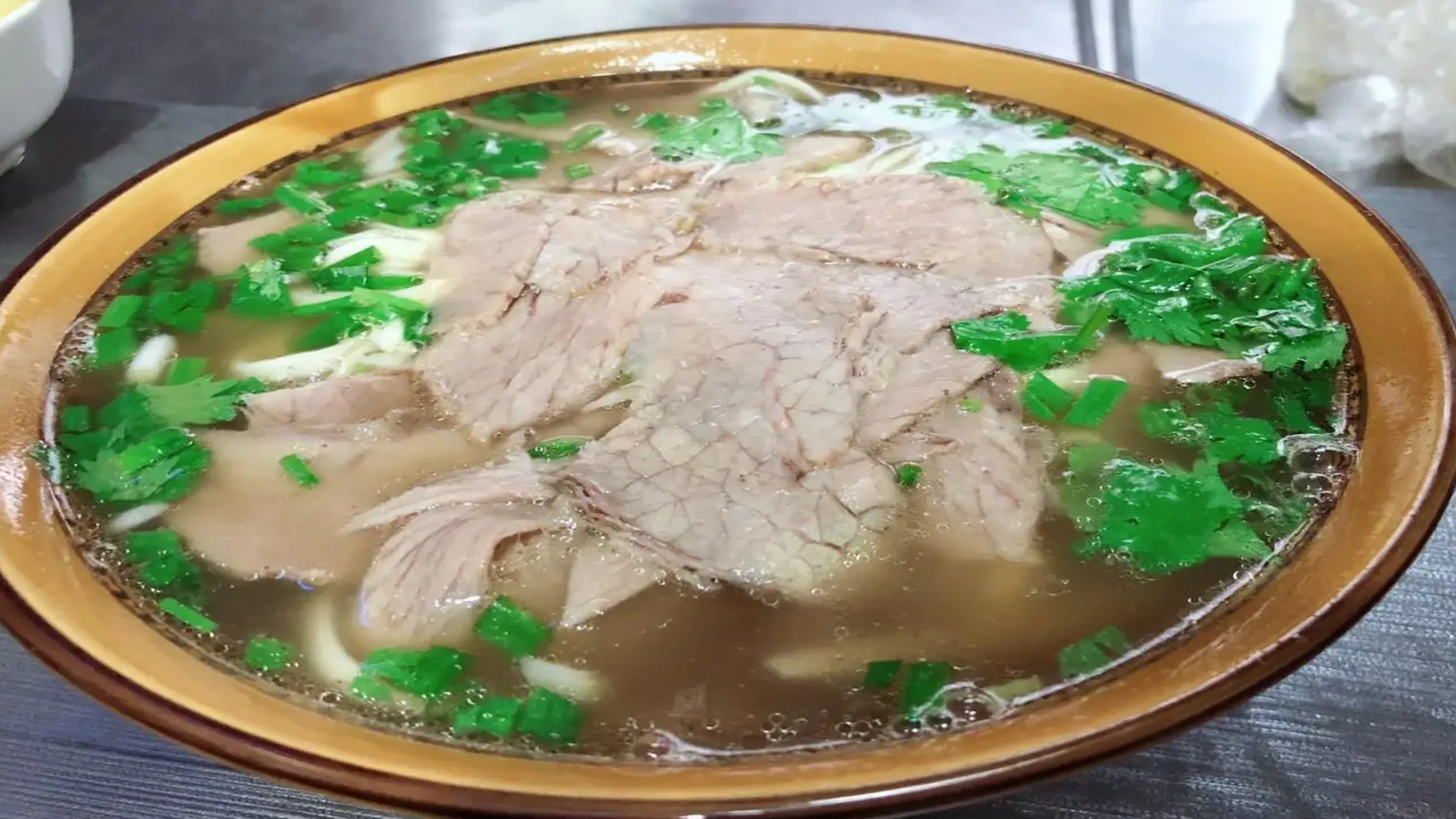伝統的なフエイナンビーフスープの芸術: アンフイの心を通る料理の旅
導入:
料理の専門家として, I have always been fascinated by the rich tapestry of regional dishes that make up the diverse culinary landscape of China. One such dish that has captured my heart and palate is the Huainan Beef Soup from Anhui’s淮南市 (Huainan City). This iconic soup is not just a meal; it’s a testament to the region’s history, 文化, and culinary prowess. In this article, I will delve into the origins, 材料, and the art of making this非物质文化遗产 (無形の文化遺産) dish, which requires a painstaking 12-hour simmer to achieve its signature flavor.
起源と文化的背景:
The Huainan Beef Soup has its roots deeply embedded in the culinary traditions of Anhui Province. This hearty soup is said to have originated from the need to utilize every part of the cow, a practice that has been passed down through generations. It is a dish that reflects the frugality and resourcefulness of the people in this region, transforming humble ingredients into a comforting and nourishing meal.
材料と準備:
The soul of Huainan Beef Soup lies in its broth, which is made from simmering beef bones for an extended period. The bones, sourced from local cattle, are cleaned and then boiled for 12 hours to extract their maximum flavor and nutrients. This slow-cooking process allows the marrow to infuse the broth with a rich, deep flavor that is both warming and invigorating.
The soup is traditionally paired with two types of accompaniments: 千张 (thousand-layer bean sheets) and 粉丝 (glass noodles). The thousand-layer bean sheets, or 千张, are a type of tofu skin that adds texture and a subtle, nutty flavor to the soup. Glass noodles, or 粉丝, are made from mung bean starch and are known for their transparency and ability to absorb the broth’s flavors.
味と食感:
The Huainan Beef Soup is a symphony of textures and flavors. The broth is rich, hearty, and slightly sweet, with a depth of flavor that can only be achieved through the long hours of simmering. The beef, once tenderized by the slow cooking process, melts in your mouth, offering a satisfying bite. The thousand-layer bean sheets and glass noodles provide a delightful contrast, their softness and chewiness complementing the robust broth and tender beef.
Appearance:
A well-prepared Huainan Beef Soup is a sight to behold. スープ, with its deep amber hue, is a clear indication of the hours of simmering that have gone into its creation. The beef slices float atop the broth, their rich color contrasting with the delicate layers of tofu skin and the translucent noodles. A sprinkling of chopped green onions and cilantro adds a pop of color and a fresh, herbal aroma that completes the dish.
代表的な料理と料理:
While Huainan Beef Soup stands as a dish on its own, it can also be the foundation for a variety of other dishes. For instance, the rich broth can be used as a base for noodle soups, or the beef can be served with steamed buns, creating a hearty meal that is perfect for the cold Anhui winters.
料理の特性:
The beauty of Huainan Beef Soup lies in its simplicity and the dedication to the craft that goes into making it. The dish is a celebration of the local ingredients and the time-honored techniques that have been passed down through generations. It is a testament to the patience and skill of the chefs who have kept this非物质文化遗产 alive, ensuring that the flavors of Anhui’s heart continue to warm the souls of those who partake in this delectable tradition.
結論は, Huainan Beef Soup is more than just a meal; it is a journey through Anhui’s rich culinary heritage. It is a dish that speaks to the soul, offering comfort and sustenance in every sip. 食品の専門家として, I am honored to share this culinary gem with the world, inviting everyone to experience the depth of flavor and the warmth of Anhui’s heart through a bowl of this timeless soup.
